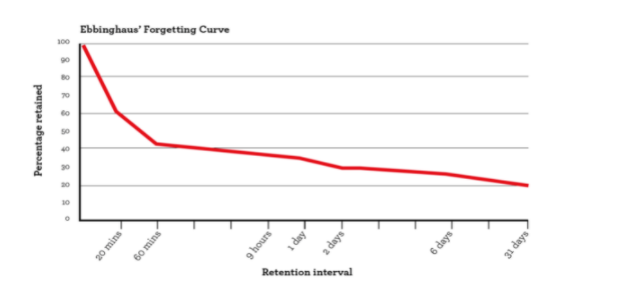If you are using the Open Up High School Mathematics curriculum, you are most likely familiar with the Ready, Set, Go independent practice problems. You probably already know that there are three different parts in each assignment, and that the Ready and the Go sections of the independent practice assignments have been designed to spiral a review of content, while the Set part focuses on consolidating the mathematics addressed in class that day. But do you know why the design of the Ready, Set, Go problems is a really good way to help students remember mathematics?
Research about learning and retention involves three important principles: repetition, spacing, and interleaving topics. Let’s see how this research unfolds in each of the Ready, Set, Go independent practice problem sets.
Teachers know that repetition is an important ingredient in the learning process. When new learning occurs, it should be revisited soon to reinforce the learning. The Set portion of the Ready, Set, Go practice problems provides this opportunity for the student. The problems in the Set are always a review of the concepts and procedures introduced in class that day. Revisiting the concepts soon is an important aspect of not forgetting.
A researcher named Hermann Ebbinghaus (1850-1909), studied memory and learning. He used his data to create The Forgetting Curve, which shows how a memory of new information atrophies in the brain, with the steepest drop occurring after only 20 minutes and the curve leveling off after a day. It’s easy to see that without additional support, retention of new learning has disintegrated to about 20% in a month.
 Graph: The Spacing Effect. How to Improve Learning and Maximize Retention ( Sept. 22, 2021)
Graph: The Spacing Effect. How to Improve Learning and Maximize Retention ( Sept. 22, 2021)
To slow down the process of forgetting, Ebbinghaus discovered that revisiting the new concepts intermittently interrupts the forgetting process. Many additional visitations improve memory immensely.
Look how The Forgetting Curve changes when the material is revisited in four spaced intervals. Researchers call this kind of distributed practice, spacing.

Graph: The Spacing Effect. How to Improve Learning and Maximize Retention ( Sept. 22, 2021)
The Ready and the Set problems both play a role in preparing students to learn the material. The Ready activates students’ background knowledge in anticipation of future learning, and the Set reinforces the new learning, but the Go ensures that students reexamine and practice the most important concepts over and over again until the really important procedures are embedded in their memories and have become tools in the students’ mathematical toolboxes.
The final ingredient for creating durable learning is interleaving. When three or more types of problems or topics are practiced in the same problem set, the mind has to work harder to decide what to do, and when the mind works harder, the effort makes the learning stronger. This sorting process also improves the student’s ability to transfer learning from one situation and apply it successfully to another. Interspersing representations and types of problems builds fluency by requiring students to sort through what they already know, in order to select a solution pathway.
The Open Up High School Mathematics curriculum is structured with many features to support instruction. But excellent teaching is only one component of learning. True learning of mathematics involves the acquisition of new knowledge and skills that can be applied later as tools to solve problems. The word later implies that the learning must be long-lasting. Therefore, the way students practice what they have learned is equally as important as the instruction.
The Ready, Set, Go independent practice problems are designed to guarantee that the new learning that occurs during the classroom lessons and builds throughout the unit, continues to thrive and endure throughout the course and into the next level of study, or even in future endeavors.
References:
Baddeley, Alan D. (1999). Essentials of Human Memory. Hove, UK. Psychology Press. Retrieved from https://archive.org/details/essentialsofhuma00badd/page/n5/mode/2up
Brown, Peter C., Roediger III, Henry L., McDaniel, Mark A. (2014). make it stick, The Science of Successful Learning. Cambridge, MA. Belknap Press.
Janet Sutorius served as a mathematics teacher for 30 years, teaching students how to make sense of and reason about mathematics. She was a recipient of the Presidential Award for Excellence in Science and Mathematics Teaching (2009). Janet is a regular presenter at the NCSM and NCTM conferences and has done so for many years. Her involvement with professional learning includes working with high school math teachers across the nation and internationally. She has been an author of high school mathematics curricula for more than ten years. She earned a B.S. degree in mathematics and a M.S. in mathematics education from Brigham Young University.

